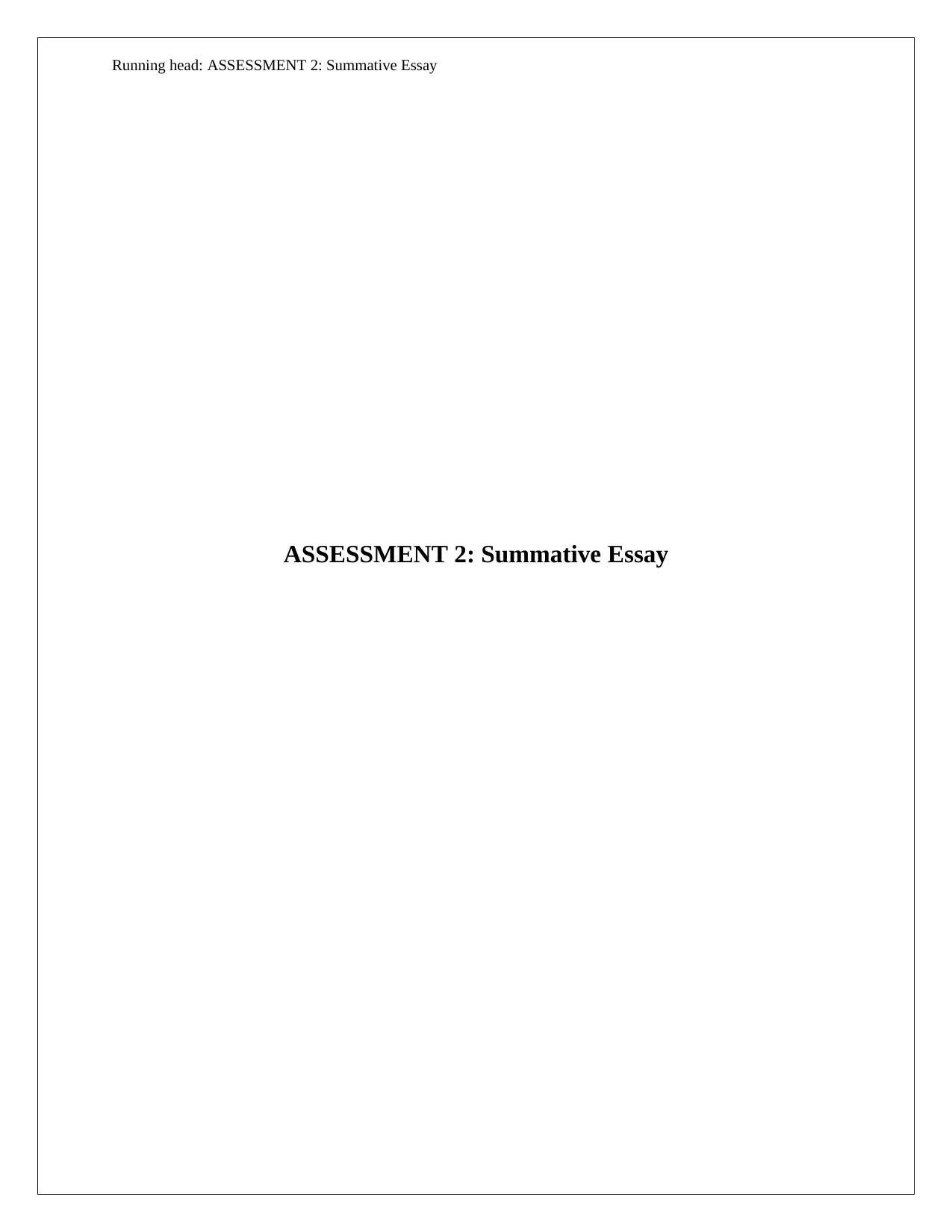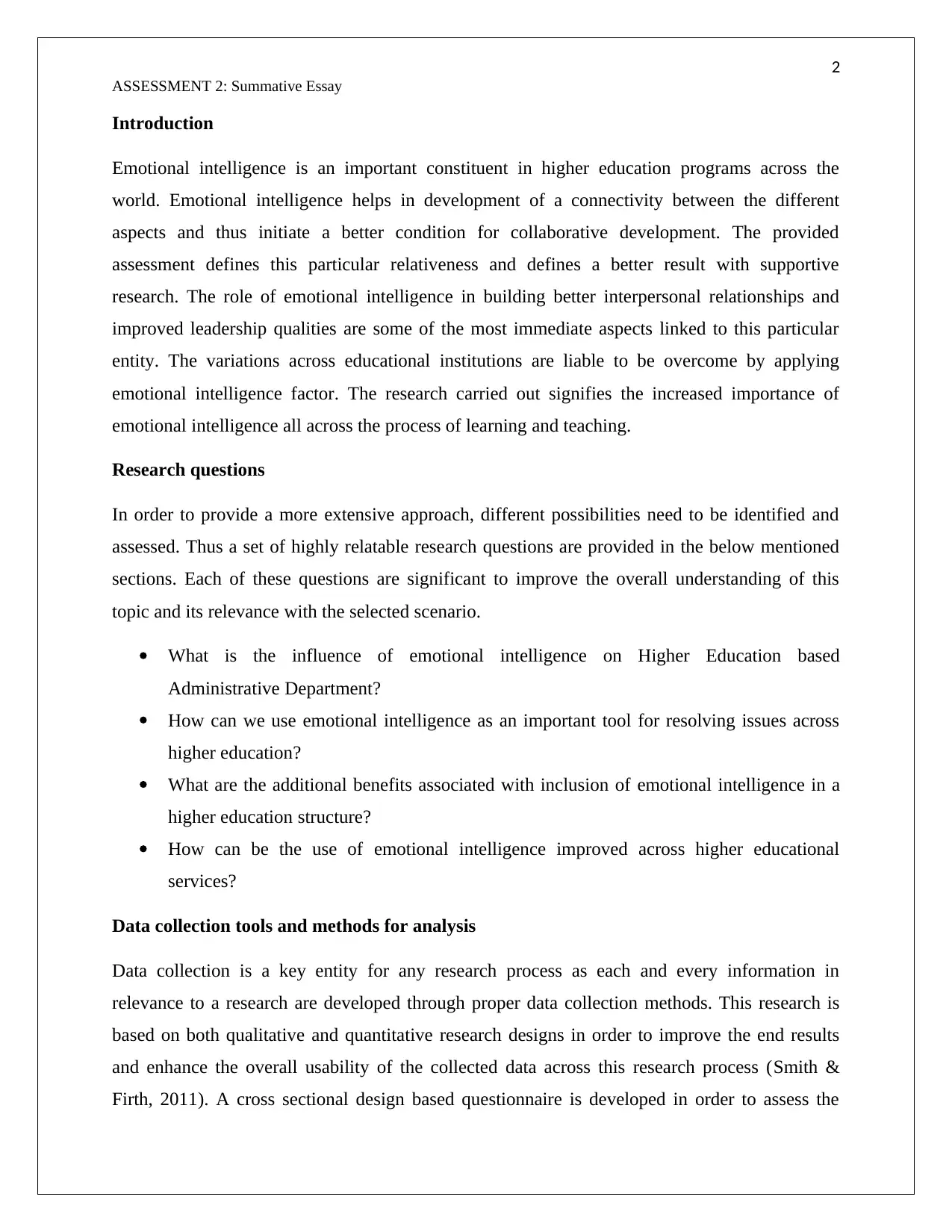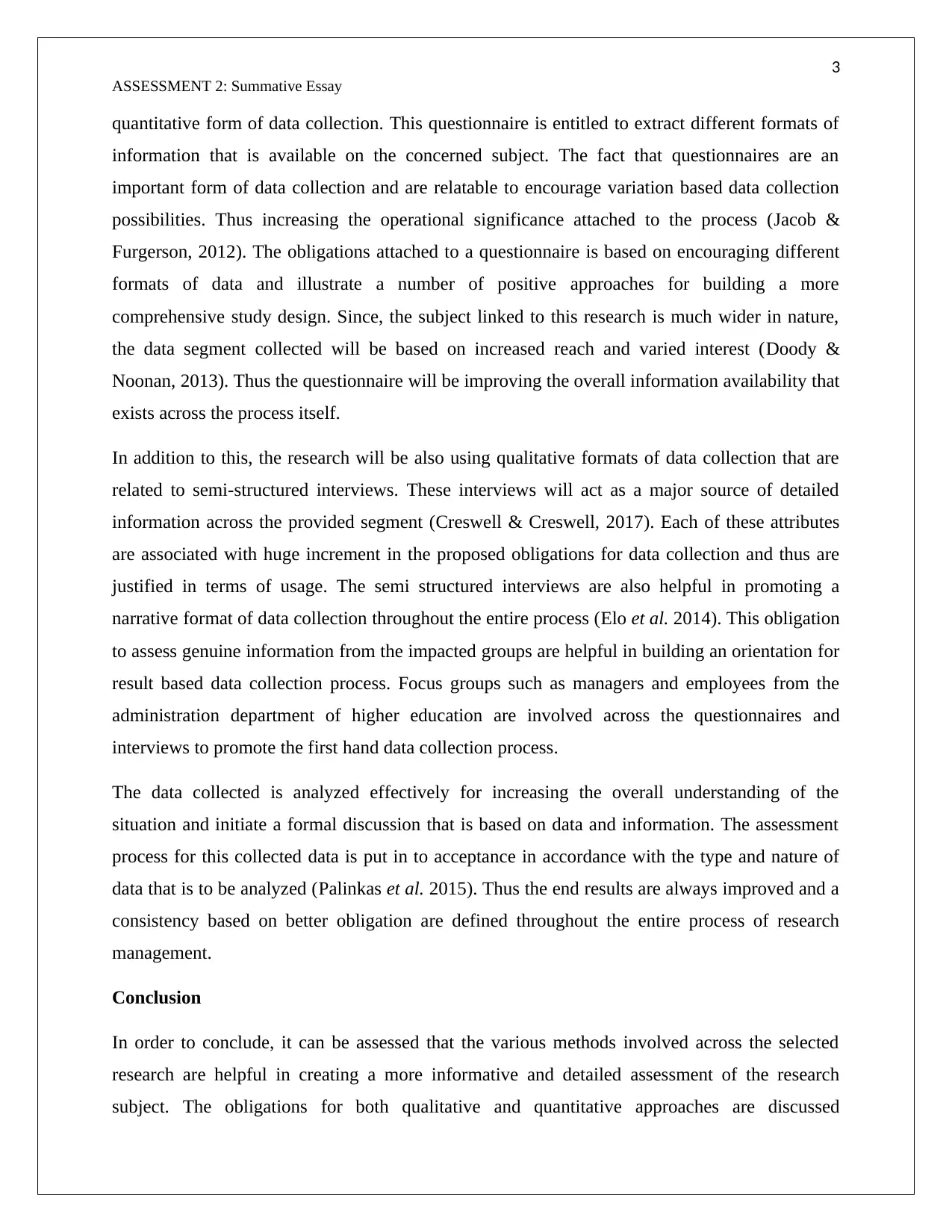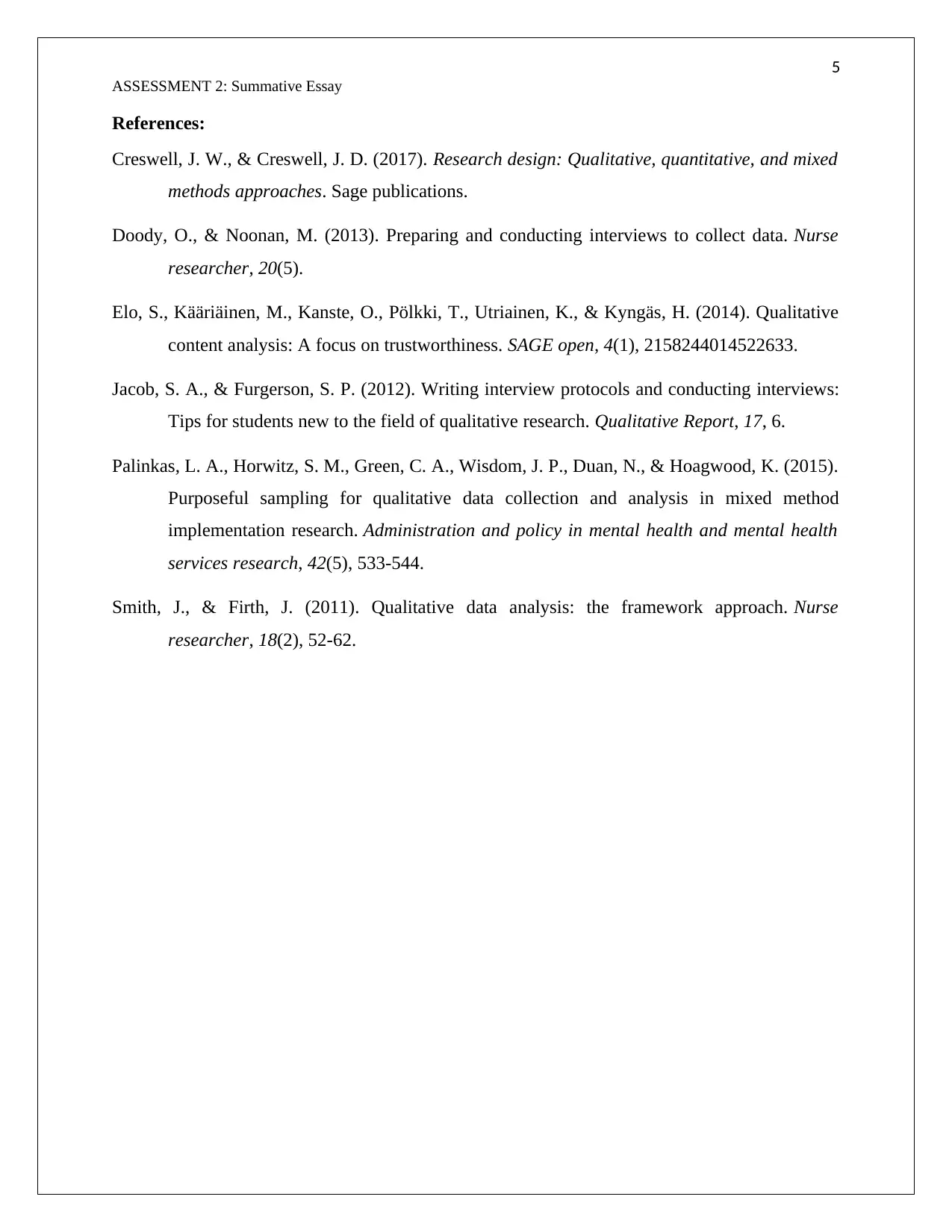UU-EDUD-801 Assessment 2: Emotional Intelligence in Higher Education
VerifiedAdded on 2022/09/23
|5
|1035
|21
Essay
AI Summary
This essay examines the role of emotional intelligence (EI) within higher education, specifically its relationship with administrative departments. The introduction highlights the importance of EI in fostering better interpersonal relationships and leadership qualities within educational institutions. The essay presents research questions focusing on EI's influence on administrative departments, its use in resolving issues, and its overall benefits within a higher education structure. The methodology section details a mixed-methods approach, utilizing both qualitative and quantitative research designs. A cross-sectional questionnaire is used for quantitative data, while semi-structured interviews are employed for qualitative data collection, involving managers and employees from higher education administration. The data collected will be analyzed to improve the overall understanding of the situation and initiate a formal discussion that is based on data and information. The conclusion emphasizes the value of the research methods in creating a detailed assessment of the research subject, summarizing the key aspects of the research process. The essay is written to fulfill the requirements of a summative assessment in the course UU-EDUD-801, Quantitative and Qualitative Research Methods.
1 out of 5











![[object Object]](/_next/static/media/star-bottom.7253800d.svg)